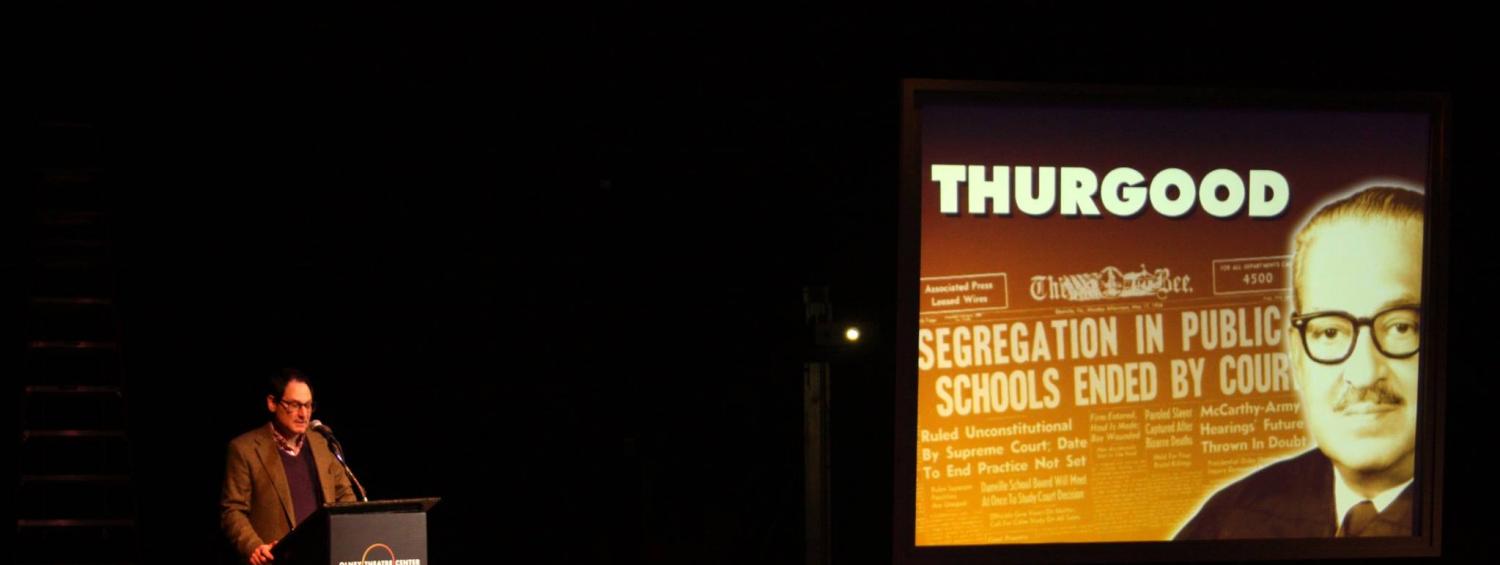Why can’t theaters collaborate to benefit each other, their audiences, and their artists? It’s so magical when it happens, and so maddening when it doesn’t.
If you’ve been following the work of OTC for the past five years you’ll know that we’re big fans of collaboration among arts institutions. My years as Executive Director of the National New Play Network (the coalition of new-play theaters that pioneered the idea of the Rolling World Premiere) taught me a couple of things that I now consider touchstones, and I hope that I’ve carried them with me to OTC.
First, if you’re worried about the size of your pie slice, you’re destined to never have enough. If you’re convinced you live in a world of scarcity, that’s all you’ll feel. Instead, embrace a spirit of abundance: that will lead to transparency and collaboration, and guess what? You’ll grow the pie.
Second, theater is an incredibly inefficient business, so finding creative ways to share resources, aligning resources, is essential to stay in a place of actual (and not just metaphorical) abundance. Each of us in our own little theater is working so hard to reinvent the same wheel each time we mount a production – let’s all work smarter, not harder, by aligning our resources.
And last, though I didn’t learn this from NNPN, it’s a belief that underpins the work we do when we collaborate: we’re not in competition with other theater companies. When good work is done, no matter how many theaters there are, we’re growing the pie. Our competition is Netflix, and Amazon Prime, and any time someone chooses to close their mind to new ideas rather than embrace them.
That’s why, in the time I’ve been your artistic director, we’ve partnered with a New York theater company to mount a new musical (Carmen: An Afro-Cuban Jazz Musical), created a two-year collaboration with Round House Theatre to co-produce Angels in America and In the Heights, and co-produced two plays with Baltimore’s Everyman Theatre. This Saturday, in fact, I’ll be announcing another kind of co-production that ensures a play we produce gets seen on the other side of the Beltway, and a few weeks after that, another novel partnership between us and another major theater company.
As proud as I am of this track record, I can’t help but feel anger that the revolution in Rolling World Premieres that NNPN pioneered has yet to take hold among our largest, flagship theaters. The gravitational pull of New York and the riches we presume New York confers is like a giant artistic black hole. Our audience and community feel the effects of this “art-sucking” at season-planning time, when regional theater companies pursue the rights to new and new-ish plays. Unenlightened agents, unenlightened artistic directors, and even unenlightened playwrights see only one path for a new play: it starts in a regional theater that will get the attention of New York theaters -> a New York theater will produce it -> the New York Times will make it a “Critics’ Pick” -> the play will now become a “property” and either go on a big national tour to places like the Kennedy Center, or every flagship regional theater will produce it, and everyone involved will be rich, rich, rich.
Certainly there are plays and musicals that should follow that path – those commercially-aimed properties that really could have a life on a national tour or Broadway. But what about plays by writers hardly anyone knows, about dark subjects that will never tour or go to Broadway? Still the agents or artistic directors advise the playwrights that riches await if they just put their faith in the New York Times to deliver a boffo review.
As a playwright who wrote a dark piece that got just such a boffo review in the New York Times, I can tell you that hundreds of productions don’t suddenly follow. And as a producer I can tell you that the far more frequent occurrence – that the New York Times ignores or dismisses a play – kills it. This happened just two seasons ago with a play by a mid-career playwright with some regional chops. She’d sent me the play and I quite liked it, and so did a large flagship theater that had helped develop it. The flagship theater decided to produce it, and the artistic director refused to allow anyone else to do it until it went to New York… where, a year later, the Times gave it a crappy review. By that time, I’d moved on to other plays, and the playwright lost her shot at a production at my theater (and at other theaters I know which were interested). And with the Times giving it the thumbs down, I’ll never do it: because the Washington Post will have read the Times review, and that will bias their response. As well as the response of culture-vultures in our audience. So that one artistic director’s bullheadedness killed her play by not letting anyone else produce it.
What a waste.
The impulse for writing this blog post incidentally is because that same artistic director just blocked me from doing another play in 2020-21. But the hope in writing it is that the move towards transparency and collaboration will just keep growing. And there’s evidence it is. As I hinted above, in a month or so we’ll be announcing a collaboration with a flagship theater that’s, in its small way, groundbreaking, and signals hopefully to the field that hoarding resources and hoarding rights comes from a place of cowardice and scarcity and shrinks the pie, but working from a spirit of abundance is better for all of us.







